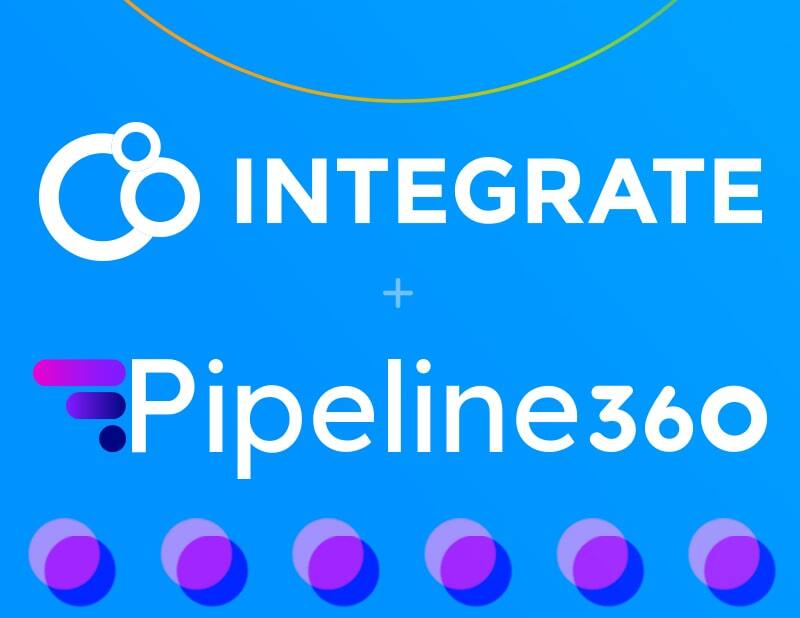Marketing tech stacks just don’t stack up anymore.
They promised too much. Changed too often. Failed to keep up with buyer behaviour, and, ultimately, underdelivered.
Martech was meant to simplify processes and amplify results, but amid a boom of new vendors and offerings, it became a snake-oil marketplace and a maze for marketing operations professionals who thought they had a game-changing tool, but, in reality, just had another piece of the puzzle. Worse yet, they probably needed to blow more budget to make it work like they thought it already did.
Now, as the economy shrinks and budgets reduce, bosses, naturally, want to wring the maximum value from it. They have to.
But here’s the real rub. For many B2B marketing organisations, the past decade of investment has left them with not one, but two, separate, and distinct technology stacks - and they don’t work together.
We need a bridge over troublesome technology.
To really understand the shortfall, let’s examine each layer, that way we can see exactly what’s missing, and what’s needed to fill the gap.
Demand Marketing — You’ll Need A Tech Stack To Deliver
It all starts with the CRM — the customer relationship management system — and an underlying data structure.
Next, we have systems and tools to acquire and manage contact or lead data (like names, job titles, contact information) such as list providers, data augmentation services, and data cleansing.
Layer three, is the demand automation system — typically a marketing automation platform (MAP) — the heart of the operation. It develops, manages and executes inbound and outbound tactics; handles lead scoring and routing.
So, we’ve got a system to hold everything. Another to manage data. A third to automate and action it. Then, connected to the MAP are the systems for demand engagement and buyer interaction across multiple channels. Applications in this layer include web conferencing, chat bots, event management, social media platforms.
But it doesn’t end there. Top of the stack is the reporting layer. Results, they’re the icing on the cake and keep the boss from cutting your budget. Systems here track and report on the performance of demand marketing tactics and what that achieves in the marketing funnel. Lead volume, velocity, conversion by stage (suspect/inquiry/MQL/SAL/SQL/opportunity/closed/won). These tools feed into the systems used to determine pipeline, booking, revenue data and reporting.
All of these tools and systems are aligned around leads, namely the contact info and digital footprints of a potential, individual, buyer.
But enough about demand, let’s move to account-based marketing and the various parts of that marketing engine.

Stacking The Tech For ABM Marketing Solutions
While the demand marketing stack became the backbone of B2B marketing, that all changed when buyers changed, with the focus moving from individuals to key accounts a company wanted to start — or expand — doing business with.
So, account-based marketing (ABM) became the new marketing approach.
Problem was, the old tech stack wasn’t up to it, so a new one was born.
Just like with demand, it all starts with the CRM and data. But, instead of a layer focusing on contact data, marketing operations professionals invested in systems creating target account lists (TALs). Other vendors later emerged with the cherry: intent data. The behavioural signal info showed what B2B purchasers were doing, where and when, for those key accounts, making them easier to target — with intent — and precision.
ABM platforms (ABMPs) were then added to the stack, to do what MAPs did for demand. They automated processes across multiple channels for finding key accounts. Other functionality included identifying anonymous digital activity based on company domains, dynamic profiling, and content management capabilities.
So: CRM. Target account lists. Intent data. Next, there’s systems to connect to the ABMPs for account engagement across different channels. This layer includes vendors offering display advertising to target accounts, content syndication, and social media, among other channels.
Reporting. The systems here measure the performance of ABM tactics against target accounts and track KPIs such as account engagement, marketing engaged accounts (MQAs), and influence of account opportunities and pipeline.
All roads in this tech stack lead to the account, namely the info and the signals a business — we want to do business with — is sending.

The Martech Gap No One Can Get Over
B2B marketers now have a healthy martech stack. In fact, they have two. But it makes no sense to operate separate lead and account-centric tech solutions. These tools, afterall, are about optimisation.
As we know, accounts don’t buy. People do. And for B2B purchasing, it isn’t individuals, it’s buying groups. The average size, now 12-18 people. A successful buying cycle, according to Forrester’s 2021 B2B Buying Survey, now requires 27 connected and personal touches for each member.
And the kicker — none of the tech in the current martech stack provides data, automation, engagement, or insights into the composition, activities, or interactions of a B2B buying group.
So, what does this mean for marketers and sales?
Well, marketing can’t build out the members of a buying group within target accounts. Can’t alert sales to an uptick in account-specific buying group activity. And they can’t view account engagement across all marketing channels and programs.
That’s too many can’ts. Too much fog in the funnel. Endless opportunities gone missing.
Or, can they?
Can those cant’s be turned into cans by some tech cupid?
Can we effectively have one tech stack to rule them all? To rule out all problems?
Yes, yes, we can.
The Marketing Technology Bridge: Integrate Demand Acceleration Platform
So a third stack is an option (that is, once vendors have begun to introduce technology to address buying group requirements), but really, has it come to that? A three stack solution to a two stack problem?
Or the Integrate Demand Acceleration Platform (DAP) can just plug the martech gap. DAP is much more than a bridge unifying troublesome technology.

The SaaS tool centralises and connects the multichannel B2B buying experience and augments existing demand and ABM technologies. Governance? Sorted. It collects, standardises, validates and enriches data from all marketing delivery channels, and it covers you for privacy compliance.
DAP provides the insights necessary to build effective, personalised buying group experiences and connects channels, processes, and tools across both stacks to create an efficient, unified, demand engine.
It also delivers insights, such as identification of the campaigns, channels, and content that deliver the best results for key accounts — and allows B2B marketers a holistic view of buying group engagement within accounts across all channels and programs.
DAP is the pivot that solves the seemingly, neverending, tech stack conundrum, that will allow marketers to support buying groups while leveraging their already significant marketing technology investments. Get your martech stack in order, book a demo today.




